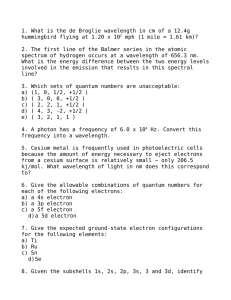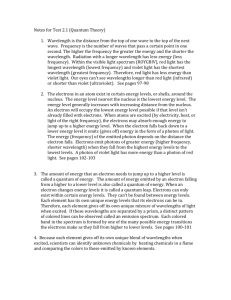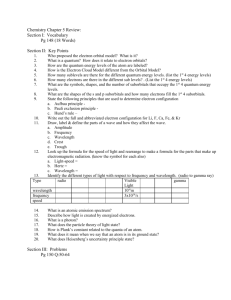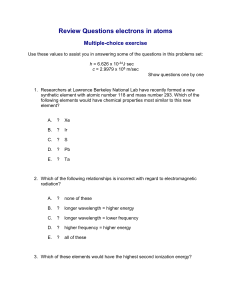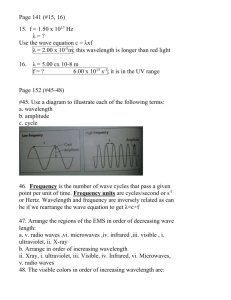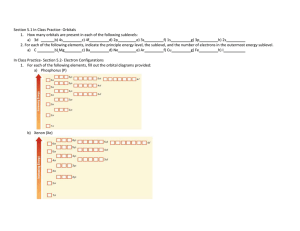Quantum Mechanics
advertisement
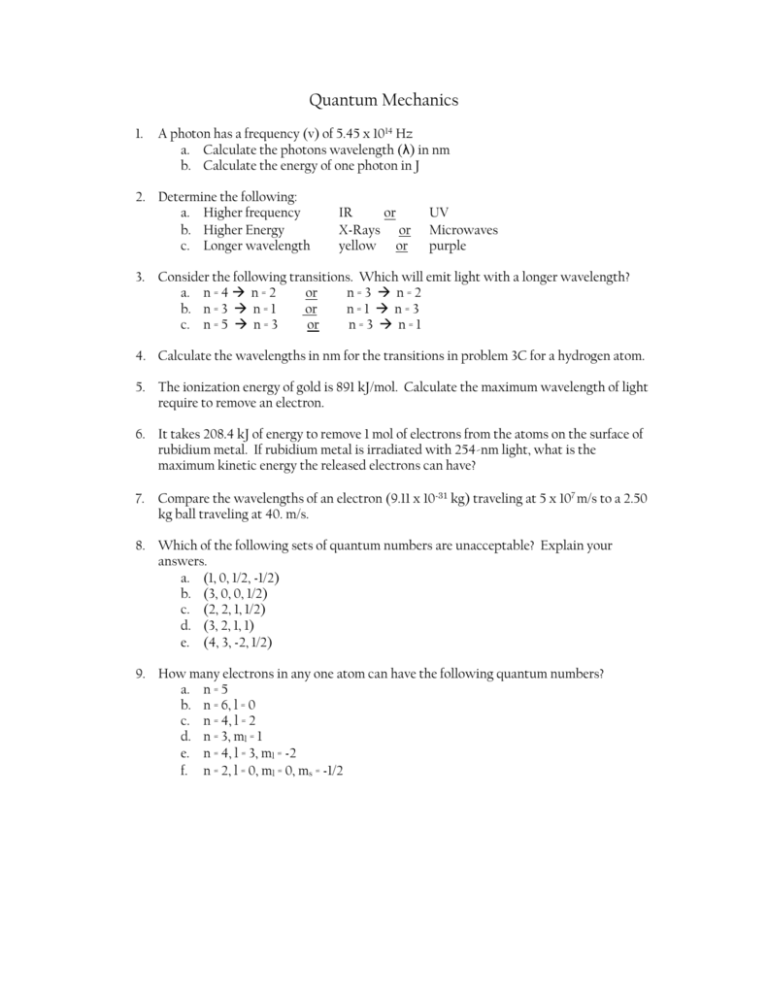
Quantum Mechanics 1. A photon has a frequency (v) of 5.45 x 1014 Hz a. Calculate the photons wavelength (λ) in nm b. Calculate the energy of one photon in J 2. Determine the following: a. Higher frequency b. Higher Energy c. Longer wavelength IR or X-Rays or yellow or UV Microwaves purple 3. Consider the following transitions. Which will emit light with a longer wavelength? a. n = 4 n = 2 or n=3 n=2 b. n = 3 n = 1 or n=1 n=3 c. n = 5 n = 3 or n=3 n=1 4. Calculate the wavelengths in nm for the transitions in problem 3C for a hydrogen atom. 5. The ionization energy of gold is 891 kJ/mol. Calculate the maximum wavelength of light require to remove an electron. 6. It takes 208.4 kJ of energy to remove 1 mol of electrons from the atoms on the surface of rubidium metal. If rubidium metal is irradiated with 254-nm light, what is the maximum kinetic energy the released electrons can have? 7. Compare the wavelengths of an electron (9.11 x 10-31 kg) traveling at 5 x 107 m/s to a 2.50 kg ball traveling at 40. m/s. 8. Which of the following sets of quantum numbers are unacceptable? Explain your answers. a. (1, 0, 1/2, -1/2) b. (3, 0, 0, 1/2) c. (2, 2, 1, 1/2) d. (3, 2, 1, 1) e. (4, 3, -2, 1/2) 9. How many electrons in any one atom can have the following quantum numbers? a. n = 5 b. n = 6, l = 0 c. n = 4, l = 2 d. n = 3, ml = 1 e. n = 4, l = 3, ml = -2 f. n = 2, l = 0, ml = 0, ms = -1/2 10. Fill in the following table: Element Symbol P Tc Cr Ag BrFe3+ Ground State Electron Configuration Number of Valence Electrons # of Unpaired Electrons 11. Determine if each of the following corresponds with an excited state or ground state electron configuration. a. [Ar]4s24p5 b. [Kr]6s1 c. [Ne]3s23p4 12. Which of the following has the largest radius? a. Al or Si b. F or Cl c. S or S2d. K or K+ 13. Which of the following has the greatest ionization energy? a. K or Ca b. P or As c. Sr or Sr2+ 14. Which of the following has the most negative electron affinity? a. Br or Kr b. C or Si
